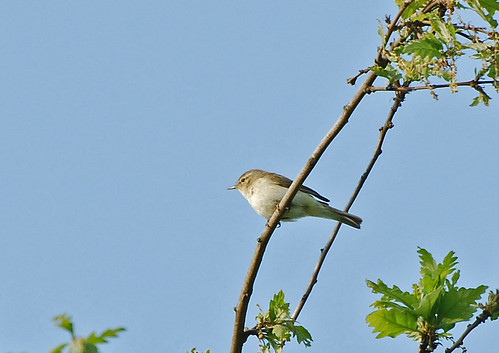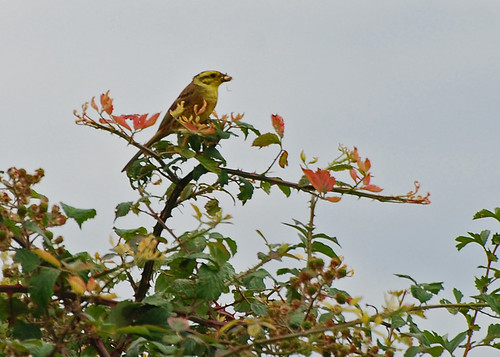After 20 months of posting this is the 100th episode of The Naturephile. The original plan was to post once a week wherever possible and I’ve averaged around five a month, so that stayed roughly on track. I thought I may struggle to find enough subject material and to acquire sufficient photographs of the necessary quality to post as often as I wanted too, but that hasn’t been a problem, so far.
When I started off writing The Naturephile, the idea I may reach a hundred posts never entered my mind, so to mark the moment I’ve trawled back through the archive to find my favourite posts to give them another airing. I’d anticipated it would be a straightforward venture but of course I’d rather underestimated the amount of subjects/species and photographs I’ve written about. But the number of posts was eventually whittled down to 14.
1) At the end of September 2010 one of natures more brutal rituals was played out right outside my back door involving garden spider courtship. Like other spiders this can easily end up in the death of the male as it did in this case. ‘Araneus diadematus‘ posted on 2nd October 2010:

I really love you… . Male on the left, Shelob on the right
2) A little farther afield are dragon flies, the most common species I encounter are common darters and migrant hawkers. This Common darter appeared in a post on 19th October 2010. I like the symmetry of the fly and the seedhead and the red colour of this male darter against the brown grass.

3) A few years ago when my sister lived in a house (she lives in a kennel now. Only joking, she lives on a narrow boat ;-)) they were digging the garden and this piece of rock turned up. It’s an Acheulian hand axe made from flint and the marks on it are where it was worked with a deer antler. It dates from around 400,000 years ago which means it could have been made by a pre Homo sapiens hominid! It fits beautifully into the palm of my hand and after that many years the edges are still sharp. Even if I was blogging about topiary or book binding I’d have to find a way to slot this in.

4) The winter of 2010/11 was known as a ‘waxwing winter‘. Every winter a few waxwing (Bombycilla garrulus, Dansk: silkehale) migrate to our shores from Scandinavia to overwinter. But occasionally the weather up there is fearsome so the waxwing migrate in large numbers and we then have a ‘waxwing winter’. And I hope you’ll agree the waxwing is a beatiful bird:
 A group of waxwing perched at the top of a rowan tree in north Cambridge
A group of waxwing perched at the top of a rowan tree in north Cambridge
5) Another consequence of the bitterly cold winter of 2010/11 was that most stretches of open water were frozen over and our herons (Ardea cinerea, Dansk: fiskehejre) were starving because they couldn’t access their normal food supplies. During this winter a hungry heron appeared in my friends garden and taking pity on its plight he fed it some fish. And of course one fish supper turned into rather more than one so the heron came to expect it, and if dinner was late it came and tapped on the window to complain to the management.
6) Sea mammals of any description are always a delight to see and photograph and one of my favourite places on the planet for doing that is the Farne Isles situated just off the Northumberland coast.

Atlantic grey seal in the North Sea off the Northumberland coast
Our holiday last year was to Northumberland and I can’t go there without taking in a boat trip to the Farnes where hundreds of Atlantic grey seal were basking on the rocks and generally taking life easy in the water.
7) Closer to home, April last year was hot and sunny and a great time to see songbirds in the countryside. One of my favourite birds is the yellowhammer (Emberiza citrinella, Dansk: gulspurv) and they’re regulars in the hedgerows around Cambridge.

Yellowhammer male – what a gorgeous colour!
8) A creature I’d never encountered before last year was the great crested newt. My friend told me of a place where they could be found so we ensconced ourselves in the nearest pub in preparation for a nocturnal newt hunt after closing time.

It was a very successful trip, a few pints followed by finding not only the great crested newt but the other two species of UK newt, palmate and smooth newts.
9) As the year rushes headlong into summer and the butterfly season really gets underway I can spend many an hour chasing our Lepidopterans round the fields trying to get that perfect picture. One of my favourites is the common blue and this is about the closest I got to that perfect picture:
 Common blue male sipping nectar – one of the best photographs I’ve ever taken
Common blue male sipping nectar – one of the best photographs I’ve ever taken
10) As well as being a top location for marine mammals the Northumberland coast is also home to huge numbers of seabirds so it’s a very happy hunting ground for me!

Just poking your head over the seawall at Seahouses can reveal lots of seabirds including oystercatcher (Haematopus ostralegus, Dansk: strandskade), knot (Calidris canutus, Dansk: islandsk ryle), eider (Somateria mollissima, Dansk: ederfugl), turnstone (Arenaria interpres, Dansk: stenvender) and this redshank (Tringa totanus, Dansk: rødben).
11) RSPB Fowlmere, to the west of Cambridge is famous for its water rail. On a trip there in December 2011 I was tipped off by a local that a particular hide was good for water rail (Rallus aquaticus, Dansk: vandrikse) and one had been seen there that morning, so off I went to try and see it.

My informant was correct. There was just the one bird there, but it scoured the mudflats in front of us for a whole hour before disappearing into the reeds, giving me plenty of good photo opportunities. I was very pleased with the primeval feel of this image with the bird face on infront of the horsetails.
12) In January this year the weather was absolutely freezing causing a small group of red-legged partridge at Tubney Fen, east of Cambridge, to seek the warmth generated by a mountain of dung:

13) My favourite bird of prey is the kestrel (Falco tinnunculus, Dansk: tårnfalk) and they are always to be seen hovering in the skies over the fields around Histon. I love watching the highly specialised hunting techniques all birds of prey in action, but the kestrel beats them all in my opinion:

A male kestrel showing off all his hunting hardware: talons, flight feathers, eyes and aquiline beak
14) And lastly, I couldn’t write a post like this without including my battling blackbirds. Of all the bird species that visit my garden these are the ones that provide the most entertainment:
 My garden gladiators locked in aerial combat
My garden gladiators locked in aerial combat
These were a few of my favourite posts, favourite for various reasons: the stories attached, the rarity of the sighting or simply the exquisite natural beauty of the subjects. I hope you like them!
And lastly, I’ve been stunned by the numbers of people from all round the world who read The Naturephile and like it enough to follow it or click the ‘Like’ button. Thanks to everyone for stopping by and enjoying a read, I love sharing the nature from my corner of Cambridgeshire with you!
 A female yellowhammer (Emberiza citrinella, Dansk: gulspurv)
A female yellowhammer (Emberiza citrinella, Dansk: gulspurv)
















































 Pair of yellowhammer, male on the left and female to the right – I was very pleased to get this picture as they’re normally so difficult to see on the ground
Pair of yellowhammer, male on the left and female to the right – I was very pleased to get this picture as they’re normally so difficult to see on the ground







 One of the ‘Pump House’ barn owls from three years ago
One of the ‘Pump House’ barn owls from three years ago


 The glorious plumage of the starling!
The glorious plumage of the starling!

